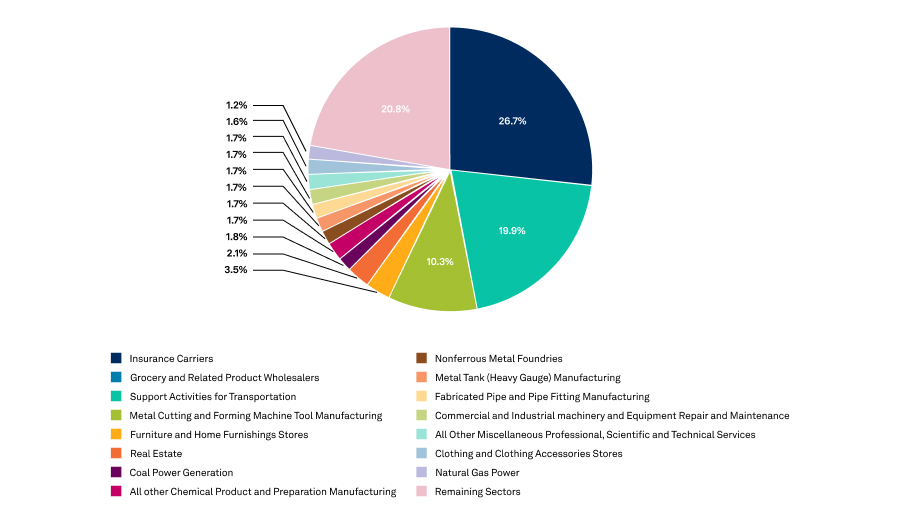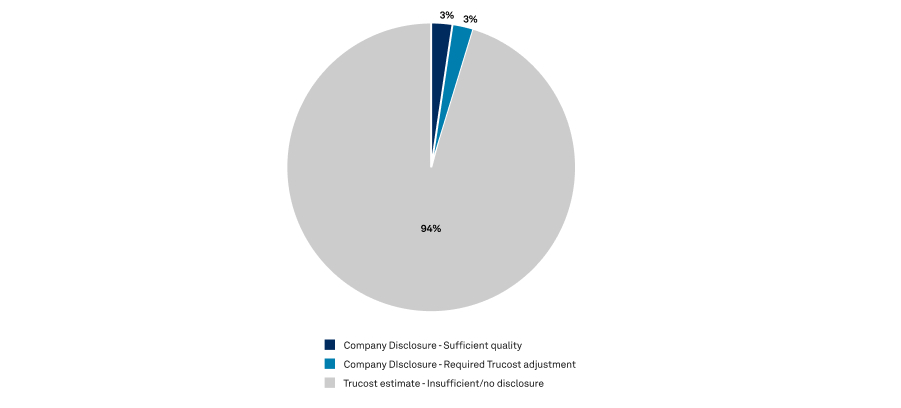As we mentioned in our first blog, “Just How Comprehensive is Today’s Corporate Environmental Performance Data?", given the holes in company-level disclosures across all major financial indices, financial institutions may not have the comprehensive picture they need when allocating capital, nor will corporations when making decisions about supply chain partners. The use of robust data modelling techniques is vital to complete the gaps, in particular across environmentally-intensive business activities.
While different approaches may be used, we believe it is essential to apply a detailed methodology that can capture a company’s diversified business activities. Our experience shows that greenhouse gas (GHG) emissions could be wide of the mark if a simple high-level sector average was used. To illustrate this, the business activities shown in Figure 1 were identified for the diversified holding company Berkshire Hathaway.
Figure 1: Berkshire Hathaway’s diversified business activities
 Source: S&P Global Trucost data as of June 24, 2021. For illustrative purposes only.
Source: S&P Global Trucost data as of June 24, 2021. For illustrative purposes only.
A large percentage (89%) of Berkshire Hathaway’s Scope 1 GHG emissions comes from its power generation activities (estimated based on fossil fuel power output using standard conversion factors). However, the company does not disclose data on the remaining 11% of Scope 1 emissions, hence S&P Global Trucost models this data using a detailed breakdown of business activities to complete the gap.
Applying a granular approach
The Trucost Environmentally-Extended Input-Output (EEIO) model splits the world economy into more than 450 distinct business activities based on the North American Classification System (NAICS). The model calculates environmental impacts per million USD in revenue for each business activity, which can then be used to anticipate the most material impacts for a company based on its discrete business activities. Trucost’s EEIO model combines industry-specific environmental performance data with quantitative macroeconomic data on the flow of goods and services between different sectors in the economy, enabling users to estimate environmental impacts for a company’s own operations and across its entire global supply chain at a very granular level.
When we turn to Scope 3 downstream GHG emissions,1 we find that disclosure levels are low.
Figure 2: Supply chain disclosure is low

Only 6% of companies in the Trucost universe disclosed data that was of sufficient quality or required Trucost adjustment. Trucost applies its granular data modelling techniques to complete these data gaps across the remaining 94% of companies.
As we can see, having a well-tested approach to fill the gaps when information is not disclosed is important to complete the picture across financial portfolios and corporate supply chains.
1 Scope 3 downstream emissions are related to the sold goods and services of a company.
Learn more about how "The Quality Imperative" differentiates our essential sustainability intelligence.
READ MORE >-
Discover multiple layers of ESG insight.
Learn more -
Get comprehensive company analytics and best practice reporting solutions.
Learn more -
Optimize the climate, ESG and impact performance of your investment portfolio.
Learn more
We’re here to help you accelerate your sustainability journey. Get connected with an ESG specialist who can advise you on your next steps.
Talk To An Expert


